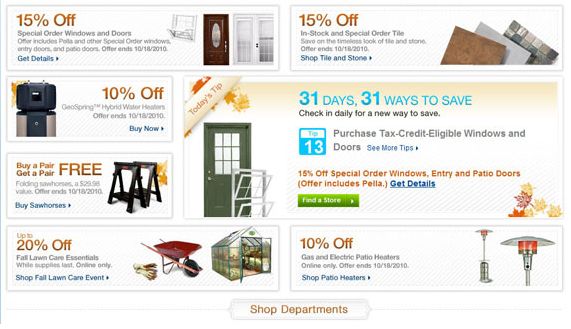Imagine your ideal prospect comes walking to your front door.
If you opened that door without thinking - with your hair sticking up and your shirt covered in pizza stains - do you think it would generate a good response? Or do you think that taking the time to spruce up and present yourself as a professional person would lead to a better outcome?
Your website acts as the digital version of you. It's the cover of the book that people judge you by. Whether in life, or online, you only have a matter of seconds in which to make a good first impression. If your website is giving out some bad vibes - then you're not going to get good results from your customers. But if you're ready to welcome them to your company with a smile on your face, and all the kick-ass user experience they can handle - then you're going to start making some cash pretty quickly.

After all, 46% of people suggest that a website design is their number one criterion when determining the credibility of a company.
Regardless of the adage, people do judge a book by its cover. If you're going to make an impression - then you might as well try and make it a good one - right?
Most of the time, your website can reveal:
· Your attitudes and interests
· The structure of your business
· What your priorities are
· How you deal with business, and customers
· If you're customer focused
· Whether you pay attention to detail
· If you're trustworthy
For instance, compare this overwhelming old landing page from Lowes:

To this new one:

If we examine the two versions of this landing page, we can come to a few important conclusions. First of all, the first landing page is cluttered, overwhelming, and difficult to navigate. It takes time for a reader to figure out what they’re supposed to be doing, and the navigation is non-existent.
Alternatively, the second landing page directly draws attention to the main features it wants you to notice. On the left side, you have the navigation bar, taking you wherever you need to go. On the right, the website draws attention to the available offers in place. It’s simple, straightforward, and the customer knows exactly where they need to go to convert.
So, let's look at what your webpages say about you - and what they should be saying if you want to get those all-important conversions.
Is your website chock-full of annoying flashy graphics? Then you're probably not making a good impression. If your website is badly designed, and looks tacky or cheap, then you're basically saying that quality doesn't matter to you. On top of that, you're also suggesting that you don't care enough about your business to invest in it.
An ugly website suggests that you're okay with mediocrity, willing to give the bare minimum and nothing more. Even if all of that is true - you don't want to tell your audience that. Instead, try sprucing things up a little to turn that negative message around. Prove that you care about what you're doing, and that you're willing to go the extra mile for your customers. These days, you don't really have to spend your life savings to get a great website, you just need to be willing to spend time and effort on creating a digital hub for your company.
Here are a few basic things to focus up when you're clearing up a bad design:
· Clashing colors - not just bad for the fashion business - clashing colors make your customers want to look away from the screen or click the back button. Be careful about your color choices - choose something that's going to have the right impression.
· Flashing graphics and gifs - a few is fine - but your website isn't Buzzfeed (probably). Cut down on the clutter if your audience members are going to struggle to see your message through all those dank graphics.
· No navigation - if your design is so bad that your readers can't figure out how to get from point A to point B - then how are they going to get onto your shopping cart and buy your product? Make it easier! Clear up your navigation.
Remember, navigation doesn't have to overwhelm your page, it just has to be obvious where you want your customer to go:

The business magazine brand Foundr’s web page is simple, effective, and straight to the point. As soon as you land on the homepage, you’re shown not only the value of what the website offers, as we’ve highlighted in that box around the “free issue” offering, but also clear direction on what you need to proceed. There’s a clear navigation bar in the corner, exactly where you’d expect it to be, and a natural flow for the content that is present on the page.
What's the point of a website anyway?
Well, it's a fun place to store all your blogs and articles. However, at the end of the day, its main purpose is to clarify what your business is all about. In other words, it's there to tell your audience what you do.
Companies use their websites to define why they are better than the competition, and share some proof of this fact. Once you've finished explaining your business, then you need to make it obvious what you want the customer to do next - whether it's subscribe to blog posts, buy a product, or join a mailing list.
A confusing and cluttered website shows that you lack purpose, focus, and don't really have a clear vision for your business. In other words - it makes you look like a teenager stumbling his way through his very first job interview.
That lack of focus and professionalism not only gives you a bad look - it also leaves your customers less likely to trust you, and increases the chances that they'll turn to competitors instead. To fix this, take some time to refresh and clarify your website. Make it easier to understand what you want your customers to do, and what they can get from you.
Make sense of your company using calls to action, and straightforward language to fully define your business, and company aims. Clarifying your business will show your audience that you're laser-focused, care about user experience - and most importantly - that you know what you're doing.

Check out the Hubpage landing page, for instance. it’s clear, and comes with an instant CTA (Call to action). As soon as you arrive on the page you see the value of the website, and what it can do for you (help you generate leads), and what you need to do to get your hands on the results you want (click the “get started” button).
Don't have a website that's built to work on mobile platforms? Then you're basically telling your customer that you don't care whether they have a good experience or not.
Around 48% of customers who arrive on a business site that doesn't work well on mobile will take this as a sign that the business simply doesn't care about their customers. And since you're not playing hard to get with your traffic (at least, I hope you aren't), you're going to need to change your attitude sharpish.
People want to know that they can come to you for a good experience, and if you're not willing to offer that, then you better believe they're going to head elsewhere. In other words, your competition is going to be making cash instead of you. Failing to go mobile responsive paints you as a company that's out-of-touch, and unsure about the benefits of mobile in today's market.
Since a non-responsive website will indicate that you're not bothered about which devices your audience uses, and that you're not going to meet their needs - switching to a mobile-friendly UX means you're ready to work hard to make your website more accessible, and turn your performance around.

Easy ways to make your website more mobile friendly include:
· Using mobile plugins for popular CMS platforms: Many of the most popular content management systems like WordPress have their own built-in solutions for making your website mobile friendly like "ThemeKey", or "MobileTheme".
· Use a responsive design: Designing a responsive website is all about putting mobile users first. It revolves around focusing first on what your mobile users need, before thinking about desktop priorities. Here's a little more guidance on responsive web design.
· Follow formatting solutions: This webpage can tell you everything you need to know about mobile-friendly formatting for your website, from choosing a mobile-friendly preferred width, to how to format your images.
While you might not be aware that 40% of people will leave a web page that takes more than 3 seconds to load, you should know that speed counts. Think about it rationally - would you want to hang out on a website that makes you wait for minutes at a time just to switch from one page to the next?
If you haven't spring-cleaned your website and ensured that everything is running as quickly as possible, then you're going to start losing out on traffic, and customers. A slow website suggests that you're unwilling to deliver a good experience for your customers, you won't invest in your customer's comfort, and that you don't value your visitors' time.
The best way to fix this issue is to get a website speed analysis every couple of months to check your own performance. If you're not performing as you should be, you'll need to start taking steps to speed up loading times. Check out this tool for analysing your website speed.
Don't tell your customers that you're too cheap to pay for faster loading times. Instead, show them that you have the balls to invest in your business - even that means shelling out a little more for a fiber connection. A speedier website will show that you're willing to deliver above and beyond the basic needs of your customers. It also shows that you respect their time.

In the world of marketing, getting across the right message is crucial. You simply can't afford to give the wrong impression with the things that you say, and the things that your website or advertising efforts say on your behalf.
Carefully evaluating your website for signs that you could be implying the wrong thing might save you a great deal of time, money, and missed customers.
